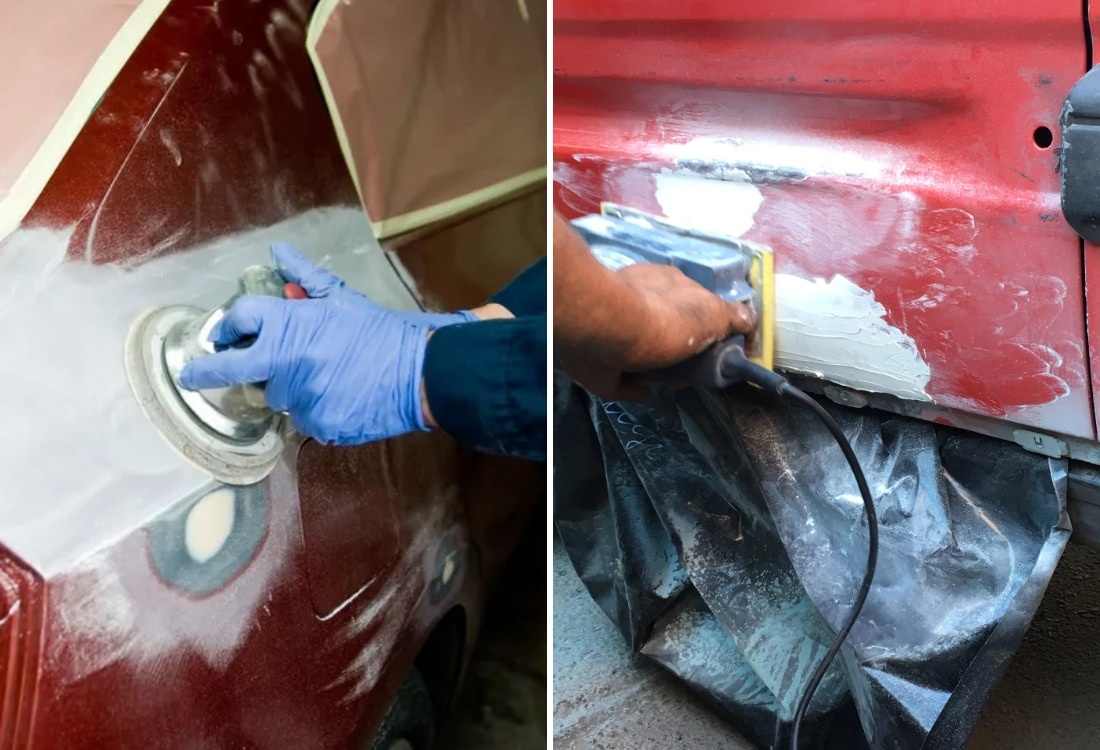
Not metal, but filler, as well as incorrect body geometry
Correct restoration of body geometry is a key point in quality repair. Some unscrupulous performers use excessive amounts of filler to hide deformations instead of restoring the shape of the metal. In reliable services, filler is used only for finishing the surface.
A body repaired using makeshift methods often conceals deformed metal beneath a thick layer of filler. This leads to delamination and cracking, making the repair short-lived and requiring repetition. Measuring the thickness of the filler layer and revealing substandard repairs can be done with a special device - a thickness gauge.
Serious accidents deform the body’s supporting frame, requiring not only cosmetic but also geometric restoration. This requires special equipment - a bench that allows for high precision in aligning the body to specified parameters. The procedure demands professionalism and deep technical knowledge. The lack of necessary equipment in some services leads to approximate restoration of geometry, which entails serious consequences. Incorrect geometry reduces vehicle handling, leads to uneven tire wear, and issues with wheel alignment.
Difficulties in closing doors and the trunk are also signs of poor-quality repair, where parts are installed with force, and mounting points are often subjected to undesirable modifications.
From minor details to major issues
Minor body damage can eventually escalate into serious problems. Body repair specialists sometimes offer gentle methods for eliminating minor defects, such as dent repair without disassembly and repainting. More extensive damage requires the use of specialized tools (spotters and others) and subsequent painting.
The seeming simplicity of such methods is deceptive. High skill is required from the performer. For example, when straightening dents, a sense of the metal is necessary to avoid deformations and burns when working with a spotter. Unqualified body repairs can lead to hidden defects that subsequently manifest as corrosion, significantly worsening the vehicle's condition.
Exact color and proper drying
The factory color of the body may vary even among cars of the same model produced at different times or from different batches. Additionally, paint fades under sunlight during operation. Therefore, when repainting, it is not easy to find a perfectly matching shade.
Makeshift repairs often lead to noticeable differences in shades after painting. Color deviations are especially visible in bright daylight. Unlike garage workshops, professional services have their own color matching laboratory, use high-quality materials, and work with experienced color matching specialists, ensuring color accuracy.
The strength and durability of the paint coating, which protects the body from external influences, are determined by its ability to withstand temperatures from -40 to +60 °C and exposure to precipitation.
Non-compliance with technological requirements for drying, in particular, insufficient drying or violation of layer curing (a common problem in garage conditions), leads to damages to the coating: delamination, cloudiness, and defect formation. Homemade drying chambers generally do not provide the necessary temperature and ventilation parameters, which adversely affects the strength characteristics of the paint layer.

